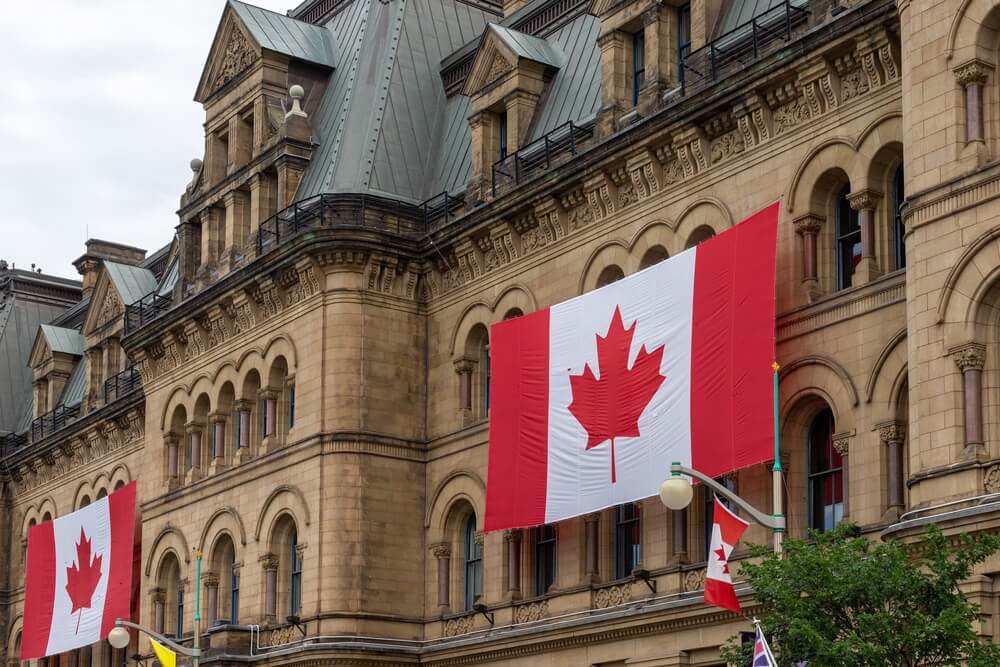The Bank of Canada and Interest Rates
Compare mortgage rate quotes and learn how the Bank of Canada influences your rate
Jump straight to...
About the Bank of Canada
What is the Bank of Canada?
The Bank of Canada is the nation’s central bank established to regulate credit and currency of the country, to control and protect the external value of the national monetary unit and to promote the economic and financial welfare of Canada.
Headquartered in the country’s capital, Ottawa, the Bank of Canada was chartered in 1934 under the Bank of Canada Act. The central bank’s purpose is to create and manage Canada’s monetary policy, ensure, and promote a sound financial banking system, and issue Canadian banknotes.
The Bank of Canada also provides banking services and money management for the government, and loans money to Canadian financial institutions.
History of the Bank of Canada
The bank was originally chartered as a privately owned corporation to ensure the bank would be removed from any undue political influence.
On March 11, 1935, the Bank of Canada began operations, following the granting of royal assent to the Bank of Canada Act.
In 1938, under Prime Minister William Lyon Mackenzie King, the bank was legally designated a federal Crown corporation.
The government at the time appointed a board of directors to manage the bank, under the leadership of a governor. Each director swore an oath of "fidelity and secrecy" before taking office.
In 1944, the Bank of Canada then became the sole issuer of legal tender banknotes in Canada.
Over time, the Bank of Canada has evolved to assist with inflationary and interest rate policies.
How does the Bank of Canada differ from other Canadian banks?
The Bank of Canada is a Crown corporation, established to create and monitor monetary policy, as well as issue bank notes. It is run by a Board of Governors and acts as an economic lever of the Canadian economy to ensure sound financial banking systems and policies are in place.
Other banks in Canada are for-profit institutions which deal with consumer or large business customers for lending, borrowing, and financing issues. Canadian banks provide services to customers that also provide investment and savings opportunities, and some have other divisions that sell insurance and mortgage products. These banks do not set monetary policy and rely on the Bank of Canada for certain lending rates.
Private banks also work as traders and underwriters of government and corporate debt.
The Bank of Canada’s role and responsibilities
The Bank of Canada has many roles in Canadian economic life such as issuing monetary policy and bank notes. It has evolved, however, as a major player in inflation fighting. The Bank of Canada aims to keep inflation at the 2% midpoint of an inflation-control target range of 1% to 3%. The inflation target is expressed as the year-over-year increase in the total consumer price index (CPI).
Between March 2022 and July 2023, the Bank of Canada raised its policy interest rate 10 times with the desire to curb economic activity, reduce demand, and thus curb inflationary tendencies within the economy.
In 2024, Canada's inflation hovered around the 2% target, an indication the economy was stabilizing. However, several significant challenges have emerged since then, including rising unemployment, a weakening Canadian dollar, and tariff threats from the U.S. To guard against the economy becoming too weak, the Bank introduced a stimulus measure in December 2024, reducing rates by another 50 bps.
In 2025, the Bank of Canada (BoC) has reduced its benchmark interest rate by a total of 50 basis points so far. This includes two rate cuts of 25 basis points each — one in January and another in March.
At the April rate announcement, the Bank held the benchmark rate steady at 2.75%, despite signs of economic weakening. This decision reflects the central bank's cautious approach amidst significant uncertainty caused by U.S. tariffs on Canadian exports. The BoC emphasized the need to gather more information on the economic impact of these tariffs before making further adjustments
What is the BoC overnight rate?
The Bank carries out monetary policy by influencing short-term interest rates. It does this by adjusting the target for the overnight rate on eight fixed dates each year. The overnight rate is the interest rate at which a bank lends or borrows funds from another institution in the overnight market. In Canada, the overnight rate is the interest rate the central bank sets to target monetary policy.
How does the BoC determine their overnight rates?
If the economy is struggling to grow, it could pull inflation significantly below 2%. In response, the Bank might lower the policy rate so that other interest rates across the economy go down. This means:
- People and businesses pay lower interest on loans and mortgages and earn less interest on savings.
- With lower rates, people tend to spend more, boosting the economy.
But if the economy is growing too fast, it could lead to rising inflation. So, the Bank raises the policy rate, which means:
- People and businesses pay higher interest on loans and mortgages. This discourages them from borrowing, reduces their spending and puts the brakes on inflation.
- With higher rates, people tend to save more and spend less, slowing down the economy.
Overnight rate changes and their effect on the economy
The overnight rate indirectly affects mortgage rates. As the overnight rate increases, it is more expensive for banks to settle their accounts, so to compensate they will raise longer-term rates. It can also affect savings rates in the same manner.
Historical Bank of Canada overnight rates
In 2020, as the COVID-19 pandemic raged, Canada saw its inflation rate hit a low of 0.72%. The next year, due to high labour demand, supply chain slowdowns, and ultimate price increases, inflation began to rise steadily.
The worldwide phenomenon of high inflation affected many central bank policy changes. In 2022, the Bank of Canada began a policy of raising its overnight rates to curb it.
Between March 2022 and July 2023, the Bank of Canada raised interest rates 10 times, reaching a 22-year high of 5%.
By June 2024, the central bank reversed course, cutting rates by a total of 175 basis points by the end of the year.
The first quarter of 2025 saw an additional 50 basis points in rate cuts, bringing the overnight rate down to 2.75%.
While inflation had been steadily declining due to falling oil and gas prices and easing supply chain disruptions, food costs remained a persistent concern for many Canadians.
However, the period of lower inflation may be nearing its end. New 25% tariffs imposed by the U.S. on a range of Canadian exports could significantly weaken Canada’s GDP and currency, fueling higher inflation.
This situation presents a critical challenge for the central bank, which must balance the task of controlling inflation with the need to support economic growth.
Bank of Canada Overnight Rate Changes
Effective Date | Bank of Canada Overnight Rate | Change (BPS) |
|---|---|---|
| April 16, 2025 | 2.75% | N/A |
| March 13, 2025 | 2.75% | -0.25% |
| January 29, 2025 | 3.00% | -0.25% |
| December 11, 2024 | 3.25% | -0.50% |
| October 23, 2024 | 3.75% | -0.50% |
| September 4, 2024 | 4.25% | -0.25% |
| July 24, 2024 | 4.50% | -0.25% |
| June 5, 2024 | 4.75% | -0.25% |
| July 12, 2023 | 5.00% | 0.25% |
| June 7, 2023 | 4.75% | 0.25% |
| January 25, 2023 | 4.50% | 0.25% |
| December 7, 2022 | 4.25% | 0.50% |
| October 26, 2022 | 3.75% | 0.50% |
| September 7, 2022 | 3.25% | 0.75% |
| July 13, 2022 | 2.50% | 1.00% |
| June 1, 2022 | 1.50% | 0.50% |
| April 13, 2022 | 1.00% | 0.50% |
| March 2, 2022 | 0.50% | 0.25% |
| March 26, 2020 | 0.25% | -0.50% |
| March 15, 2020 | 0.75% | -0.50% |
| March 3, 2020 | 1.25% | -0.50% |
*As of 2021, a change takes effect the day after its announcement.
Chartered banks’ prime rates in Canada
What is a bank’s prime rate?
The prime interest rate, also known as the “prime rate,” is the interest rate commercial banks charge their most credit-worthy business customers for things like variable rates and lines of credit. It is a baseline rate upon which all floating rate loans are negotiated (for example, prime 6.70%). The prime rate is set by financial institutions in a competitive fashion.
How do banks determine their prime rates?
The rate is individually set by each bank, but when the prime rate is moved by one bank, other banks tend to follow and use the same rate within a day or two. The prime rate tends to be set based on what the Bank of Canada sets their overnight target rate at.
Why do prime rates matter for mortgage rates?
After the Bank of Canada has set its overnight rate and banks have set their prime rates, mortgage rates will rise and fall. When the prime rate in Canada goes up or down, your mortgage rate will go up or down by the same amount. Variable mortgages usually come with a lower rate than fixed-rate mortgages, however there’s always a risk the rate could go up (or down) during your mortgage term.
Canadian Chartered Banks Prime Rate Changes
Effective Date | Prime Rate of Chartered Banks | Change (BPS) |
|---|---|---|
| April 16, 2025 | 4.95% | N/A |
| March 13, 2025 | 4.95% | -0.25 |
| January 30, 2025 | 5.2% | -0.25% |
| December 18, 2024 | 5.45% | -0.50% |
| October 30, 2024 | 5.95% | -0.50% |
| September 11, 2024 | 6.45% | -0.25% |
| July 31, 2024 | 6.70% | -0.25% |
| June 12, 2024 | 6.95% | -0.25% |
| July 19, 2023 | 7.20% | 0.25% |
| June 14, 2023 | 6.95% | 0.25% |
| February 1, 2023 | 6.70% | 0.25% |
| December 14, 2022 | 6.45% | 0.50% |
| November 2, 2022 | 5.95% | 0.50% |
| September 14, 2022 | 5.45% | 0.75% |
| July 20, 2022 | 4.70% | 1.00% |
| June 8, 2022 | 3.70% | 0.50% |
| April 20, 2022 | 3.20% | 0.50% |
| March 9, 2022 | 2.70% | 0.25% |
| April 1, 2020 | 2.45% | -0.50% |
| March 18, 2020 | 2.95% | -0.50% |
| March 11, 2020 | 3.45% | -0.50% |
Source: Bank of Canada
Inflation and the Consumer Price Index (CPI)
Economists and the Bank of Canada evaluate consumer purchasing power using the average price of a "basket" of commonly purchased goods and services. This basket, which includes items like food, transportation, clothing, recreation, and housing, is known as the Consumer Price Index (CPI).
By observing how the CPI rises or falls, the Bank of Canada can assess inflation levels. A little inflation isn’t a bad thing – it's an indicator of a growing economy. However, it becomes problematic when the cost of goods and services rises faster than consumer purchasing power. This is why the Bank of Canada has a mandate to control inflation. The goal is to keep it within a range of 1% to 3%.
Total Consumer Price Index (historical inflation rates)
Inflation had been on a steady climb starting in 2022 and up until 2024. In June 2022, the total CPI was recorded at a historical high of 8.1% (the highest in over two decades), which led to the Bank of Canada making some drastic changes to its monetary policy.
The Bank's decision to implement 10 interest rate hikes between March 2022 and January 2023 helped ease inflation from its peak.
By June 2024, the Bank shifted gears, cutting rates to stimulate economic growth. Over the course of the year, it introduced seven rate cuts, bringing the Consumer Price Index (CPI) down to 1.8% by year-end.
However, inflation began to rise again in 2025 due to the end of the GST holiday and trade tensions with the U.S. As of March 2025, the total CPI stands at 2.3%.
| Year | Jan | Feb | Mar | Apr | May | Jun | Jul | Aug | Sep | Oct | Nov | Dec |
|---|---|---|---|---|---|---|---|---|---|---|---|---|
| 2025 | 1.9% | 2.6% | 2.3% | |||||||||
| 2024 | 2.9% | 2.8% | 2.9% | 2.7% | 2.9% | 2.7% | 2.5% | 2.5% | 1.6% | 2% | 1.9% | 1.8% |
| 2023 | 5.9% | 5.2% | 4.3% | 4.4% | 3.4% | 2.8% | 3.3% | 4% | 3.8% | 3.1% | 3.1% | 3.4% |
| 2022 | 5.1% | 5.7% | 6.7% | 6.8% | 7.7% | 8.1% | 7.6% | 7.0% | 6.9% | 6.9% | 6.8% | 6.3% |
| 2021 | 1.0% | 1.1% | 2.2% | 3.4% | 3.6% | 3.1% | 3.7% | 4.1% | 4.4% | 4.7% | 4.7% | 4.8% |
| 2020 | 2.4% | 2.2% | 0.9% | -0.2% | -0.4% | 0.7% | 0.1% | 0.1% | 0.5% | 0.7% | 1.0% | 0.7% |
Source: Bank of Canada
Bank of Canada overnight rate forecast
Through the last couple of years since inflation began to rise, Canada’s economy has remained relatively strong and avoided a recession – so far.
Real gross domestic product (GDP) was stable at the start of 2025, but the economic outlook remains uncertain. In its April announcement, the Bank of Canada highlighted signs of economic weakening in Canada, the U.S., and the eurozone.
The first quarter ended with the Bank lowering the benchmark rate by 50 basis points. Typically, central banks reduce interest rates to stimulate slowing economies, leading analysts to anticipate further rate cuts this year. However, this prediction could shift depending on whether the U.S. introduces new tariffs and how existing ones impact the economy over time.
Bank of Canada Governor Tiff Macklem stated that if Canada faces a combination of slowing growth and rising inflation, fiscal policy measures will be required, as monetary policy alone would not be sufficient to address these challenges.
Frequently asked questions about the Bank of Canada
Find answers about questions you may have about the Bank of Canada.
What is the current Bank of Canada interest rate?
The current Bank of Canada overnight rate is 2.75%. The bank has cut interest rates by 50 bps in 2025 so far. The prime rate as of April is 4.95%.
Is the Bank of Canada rate going up or down compared to 2024?
The Bank of Canada's first two rate decisions in 2025 reduced the overnight rate to 2.75%, down from its peak of 5.0% between December 2023 and April 2024. With inflation within the Bank's target range, further rate cuts may be possible. However, this could change depending on developments in the ongoing trade conflict.
What will Bank of Canada interest rates be for the rest of 2025?
Without a crystal ball, it is difficult for anyone to predict where interest rates will go this year. The Bank of Canada says inflation is likely to stay close to the 2.5%-mark and could gradually return to the 2% target in 2025.
What is the schedule for the Bank of Canada's rate announcements in 2025?
The remaining scheduled dates for the interest rate announcements for 2025 are as follows:
- Wednesday, June 4
- Wednesday, July 30
- Wednesday, September 17
- Wednesday, October 29
- Wednesday, December 10










